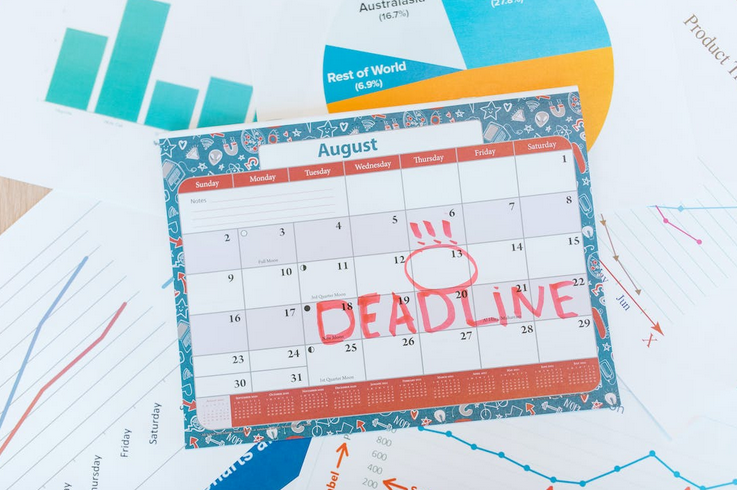In the first two parts of this series we looked at what roles there are in the interview process and how we can get hold of potential candidates. Today we are preparing for direct contact with the candidate. That’s right, it’s getting serious.
Document screening
However, one thing still stands between the application and the interview with the candidate: The screening of the application documents.
When you read the documents, try to be as unbiased as possible. Be aware of one thing beforehand: You are not free of prejudices. Often they come unconsciously and there is little you can do about them (at least in the short term). What you can do, however, is to be aware of them and try to focus on the facts. The CV reflects only a small part of a person’s life and does not give you the reasons why it happened the way it did.
Example:
The candidate changed the last two jobs during the probationary period (at least the period you think is the probationary period)? – Hands off, the candidate is a wind egg!
Or is he not? Maybe the last jobs were not the right ones? Or the employer was simply bad (because there are also bad employers). Because the probationary period is there so that the employee can also decide whether it suits him or her or not. No one is forced to stay with a bad employer forever.
Maybe the candidate is not a wind egg at all, but just very aware of what he is willing to accept and what not. A great quality, I would say.
Or maybe there were compelling spatial changes for personal or family reasons. You won’t find out without asking. But should you turn down the candidate just because your head has quickly played up a solution? I say no. This applies to the whole interview process, by the way.
Another example:
You see a picture of a candidate scowling at you. Already he or she is labelled as unfriendly. Or the candidate smiles at you, and poof, you think the person is friendly and nice. But can the expression on a (perhaps even optimised) photo give you a deep insight into a person’s character? Probably not.
So in this part of the application process, concentrate on the facts you have. Here you should mainly focus on the professional qualifications that you can glean from the supporting documents. Has the candidate already worked with the required tools? Is he familiar with the required areas? And so on …
Again, not everything has to be 100% perfect, but it should be the right direction. If this is the case, then invite the candidate to the first interview.

Number of interviews
The question often arises is how many interviews should we conduct with the candidates. There is a simple, though perhaps not entirely satisfactory, answer to this: “Not too many and not too few.”
Okay, okay. You probably did expect a little more as an answer now. The question about the number of interviews is actually answered like this: There should be enough interviews so that you can illuminate the candidate from all aspects that are important to you. On the other hand, there should not be so many interviews that you scare the candidate away in advance.
In addition, the number of interviews should also correspond to the job. Imagine you are applying for a junior engineering position and you receive an invitation for a full-day interview marathon lasting 8 hours. Would you accept the invitation and go to the interview? I wouldn’t. After all, the interviews are an investment of time by the candidate, and if he gets a similar job with a competitor with 3 interviews? What then justifies the candidate spending a whole day with you?
In addition, of course, you also invest on your side. Every hour an employee of yours sits in interviews is an hour they are not working in their core job (unless the employee is a recruiter).
On the other hand, it is different if you are applying for a job as a senior vice president in a large company, for example. Here, several interviews and a longer process are expected.
In the end, the number of interviews depends on your experience and your aspirations. If you come out with one interview, perfect. However, a larger number of interviews allows you to get more interviewers in the process, and thus helps to gather more impressions about the candidate. This helps to get a better and more accurate picture of the candidate.
Personally, I think three to five interviews is a good number when it comes to engineering positions. This allows you to tap into the most important aspects. As I said, depending on the job family and profile, this can also change.
Number of interviewers
After the question of how many interviews there should be, the question of how many colleagues should interview the candidate often comes up.
As a rule, you should only send one interviewer to the interview. The ratio of one to one creates a feeling of eye level and it can help (especially with shy or introverted candidates) to make the situation more relaxed.
However, it can make sense to take another colleague with you to the interview. This could be to observe you and give you tips on how to improve your interview, or you could take another colleague from the team with you so that as many people as possible can see and assess the candidate. It is also conceivable that you “shadow” an experienced interviewer to train him or her further.
There are various reasons, but please do not have more than two interviewers per candidate. After all, this is an interview and not an interrogation! If there are too many interviewers, it can confuse the candidate. “Good afternoon. Let me introduce you: We have Ms Müller from the HR department here. Mr Gustav is a possible future colleague. Mr Schmidt on my right we are currently training to be an interviewer. And then we have Ms Meier from the accounts department…” … who doesn’t get the urge to get up and leave. So, two interviewers maximum and no more.
And if you don’t go into an interview alone, make it clear from the beginning which of you will conduct the interview and which will only watch and ask a question if necessary. The candidate should be able to focus on one person. In addition, this prevents the unattuned interviewers from making contradictory statements or pulling the candidate from topic A to B and back again.
The questions
In Part 1 of this series, we discussed the fact that a skilled interviewer can conduct an interview off the cuff without much preparation. But why can they do that? Probably not because they were born to be an interviewer. No, they simply have all the questions in their heads that enable tehm to assess the candidate correctly.
And that brings us to the most important part of preparing for an interview. Create a catalogue of questions that will help you get all the answers you need to assess the candidate.
In addition, you should think of a structure that you can follow. Because one thing is for sure: when you start interviewing, the candidate will not be the only one in the room who is nervous. A good structure helps you not to lose the red thread. Nothing is more stupid than forgetting important points.
For example, when you leave the interview and think, “Shoot, I meant to ask about salary expectations.” If you then have to follow up in an email with the words “What I forget to ask…“, it makes you look less professional in the eyes of the candidate.
When building your questionnaire, it is a good idea to include different questions on the same topic. This helps you to adapt flexibly to the candidate. Not everyone is the same and understands every question straight away. Instead of explaining the question to the candidate over and over again, you can simply switch to a similar question in the hope that it will be better understood.

Investigate deeper
An important lesson to learn in interviews is to follow up. The reason for this is simple: if you interview regularly, you are well prepared for interview questions. If you are interviewing a senior candidate, for example, the chances are high that he or she has already asked the questions you ask umpteen times and has the answers ready (although I have to admit that I would not have a spontaneous answer to some of my own questions). And those who don’t have that much experience are usually clever enough to look up common interview questions on the internet.
Accordingly, it is important not to jump to the next question after the first answer, but to go a little deeper. That is where the right insights are hidden.
Let’s take an example of a very classic interview question: “Tell me one of your weaknesses” (I don’t ask this question in interviews, by the way).
The candidate might answer: “My biggest weakness is that I always put way too much passion into my job and work hard into the night to move the company forward“.
Shaking your head that the candidate has just (like many others) tried to sell a strength as a weakness, you can move on to the next question … or just pick up where you left off and perhaps answer like this. “Oh, that’s interesting. Why do they think that’s a weakness?“
At the latest with the following answer you know whether the candidate just wanted to show off or is really convinced that they have to work on getting their work-life balance under control.
Go deeper, don’t let up, even if it may seem unpleasant at first glance. But be aware that you have a maximum of 60 minutes for the interview, after which you have to make a decision about whether you can work with the candidate for the next few years. Use this time wisely. The word “why” is one of your strongest weapons to find out what you want to find out about the candidate.
Multi Cultural Hiring
One topic that I would like to touch on only briefly here, because it would require at least one or two articles, is the hiring of multicultural teams. We have already touched on it briefly, and will go into it in more detail later in another article, but the advantages of multicultural teams (diversity, learning effects, etc.) should be at least fundamentally clear to most people.
What is often forgotten, however, is to use the knowledge about the different cultures already in the interviews. Because different cultures also have different ways of conducting interviews. And what may seem strange to you or what you would classify as a red flag may be completely normal or part of good manners in another culture. That’s why I would advise you to take colleagues from other cultures with you to your interviews and get feedback afterwards on how they felt about the interview.
You can also do this in preparation for interviews by setting up specific appointments with colleagues from the regions the candidate comes from. This helps you to overcome prejudices in advance and to get an objective picture from the interview.
In the end
Now we are ready, the preparations for the interviews are completed. Now it’s time to get in touch with the candidates and move on to part four – the interviews.

